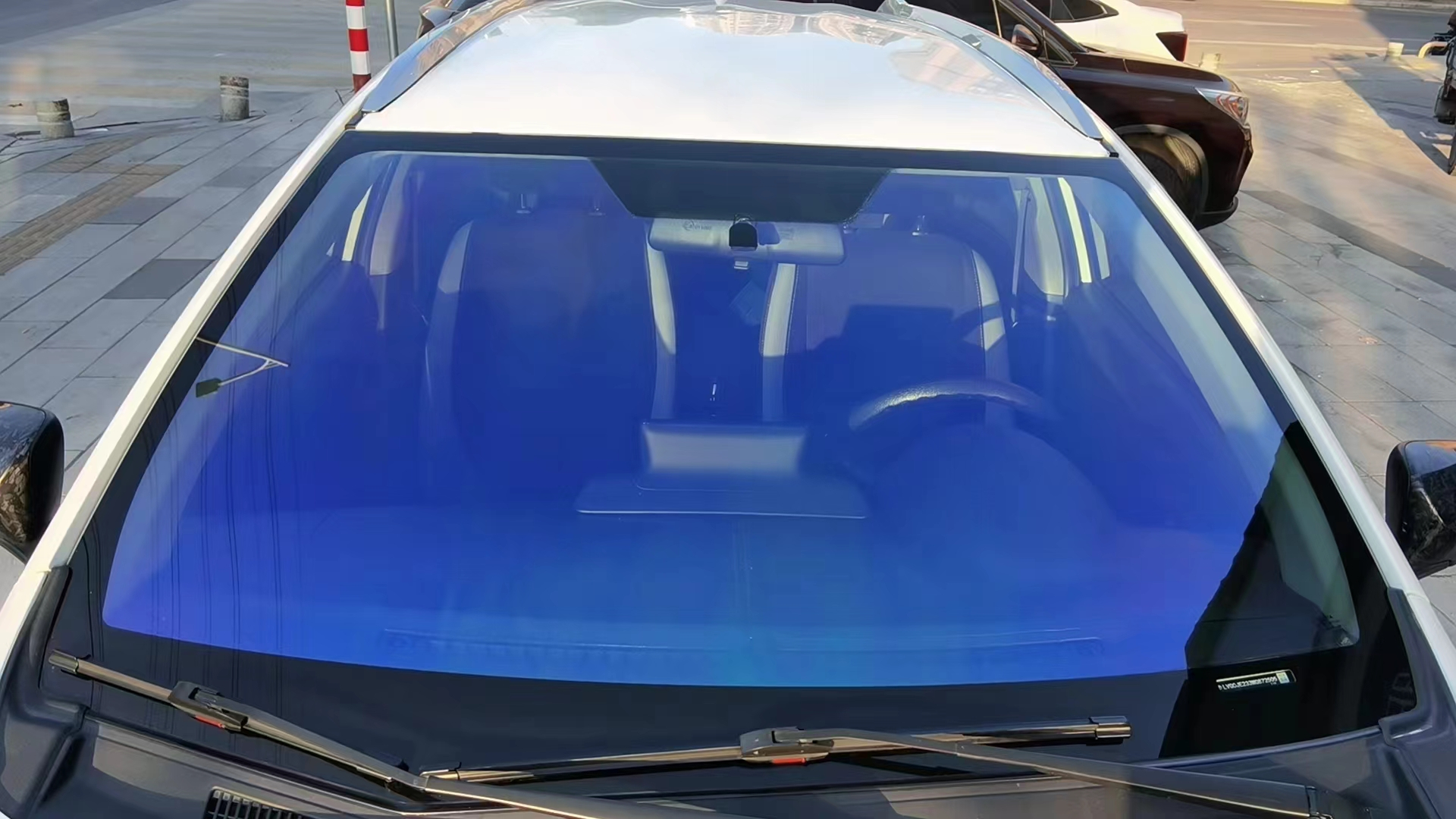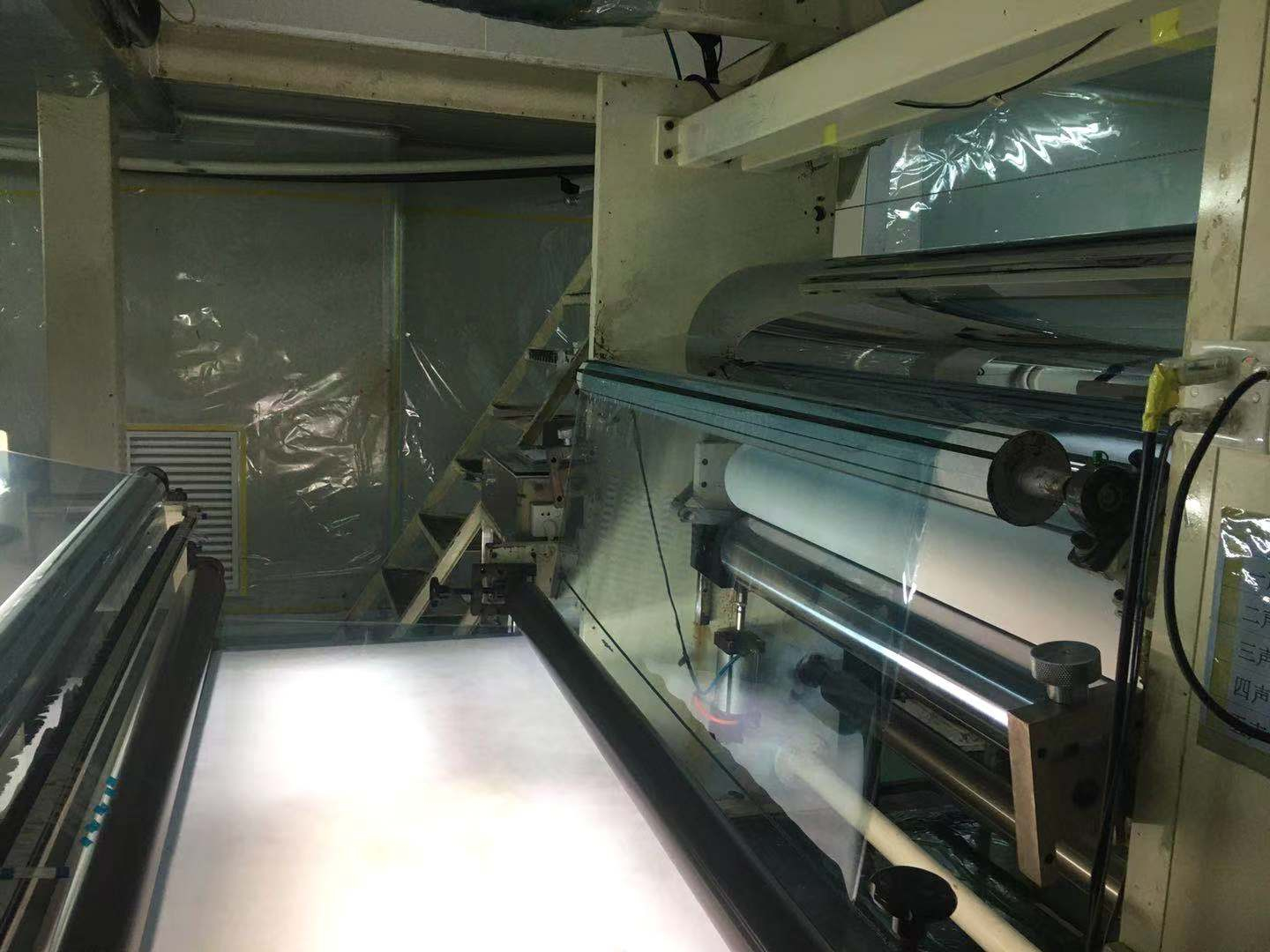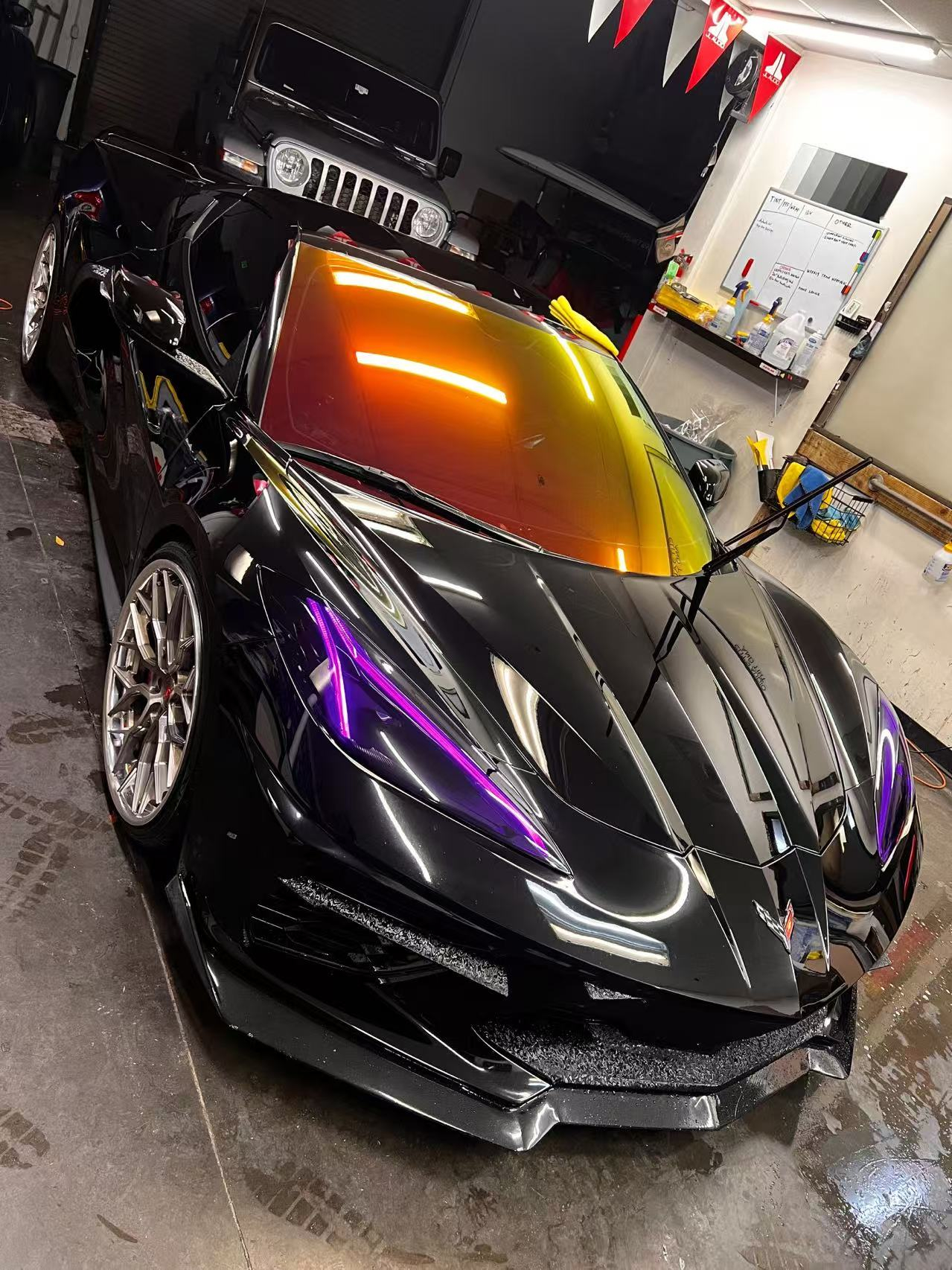Introduction
Window tinting technology has come a long way, offering many benefits that make your space more comfortable and functional. Whether you want to reduce glare, protect yourself from harmful UV rays, or save on energy costs, window film is a versatile solution.
Key Benefits of Window Tinting Technology:
Glare Reduction: Tinted windows minimize the intensity of sunlight entering your space, making it easier to see screens and reducing eye strain.
UV Protection: High-quality window films can block up to 99% of harmful UV rays, protecting your skin and preventing fading of interior furnishings. The Nano Ceramic Film series is an excellent example of such high-quality films.
Energy Efficiency: By reflecting heat away from the windows, tinted films help maintain a cooler indoor environment, reducing the need for air conditioning and lowering energy bills.
In addition to these benefits, window tinting also includes options like paint protection film, which offers superior protection for vehicle paintwork against scratches and abrasions.
This article will explain how window tinting technology works and where it can be used. You’ll learn about the various types of window films available, including our IR Nano Ceramic Film series, known for their exceptional heat rejection and UV protection.
Additionally, understanding how to maintain your window tint can ensure lasting clarity and protection. Professional installation is crucial for achieving the best results, equipping you with the knowledge to make informed decisions about integrating this innovative technology into your home or vehicle.
Understanding Window Film
What Is Window Film?
Window film is a thin, multi-layered polyester material that sticks to the glass surfaces of windows in homes, offices, and vehicles. Each layer of the film has specific functions like blocking UV rays, reducing glare, and insulating against heat. These films are designed to make windows look better and work more efficiently.
How Does It Work?
Window films work by absorbing or reflecting sunlight. They have special coatings that filter out harmful ultraviolet (UV) rays and reduce solar heat gain. This helps keep indoor areas cooler while preventing furniture and other items from fading due to UV exposure.
Types of Window Films
There are several types of window films available on the market, each with its unique properties and benefits:
- Dyed Films: These are basic window films that use dye to absorb solar heat. They provide privacy and glare reduction but may fade over time.
- Metalized Films: These films incorporate tiny metallic particles that reflect sunlight. They offer superior heat rejection and durability but can interfere with electronic signals.
- Hybrid Films: Combining dyed and metalized layers, hybrid films offer a balanced performance in terms of heat rejection, glare reduction, and minimal signal interference.
- Carbon Films: Known for their matte finish, carbon films block a significant amount of infrared light without fading over time. They also do not interfere with electronic signals.
- Crystalline Films: These high-performance films are virtually clear yet provide excellent UV protection and heat rejection. Ideal for those who prefer an unobstructed view.
- Ceramic Films: Utilizing nano-ceramic technology, these films block up to 99% of UV rays and offer excellent thermal performance without affecting visibility or signal reception. The high-quality nano-ceramic films are known for their superior features such as spectrum selectivity and anti-glare properties.
Understanding these different types can help you choose the right window film based on your specific needs for privacy, energy efficiency, and UV protection. Each type has its own set of advantages tailored to various applications across residential, commercial, and automotive settings.
The Science Behind Tinted Windows
- Tinted windows work by blocking harmful UV rays and reducing solar heat gain. They use various technologies to achieve these effects. At the core, window films contain multiple layers of materials designed to reflect, absorb, or dissipate light and heat. This multilayer structure includes:
- UV Blocking Layer: This layer is crucial as it filters out up to 99% of harmful UV rays, protecting interiors from fading and reducing skin exposure to UV radiation.
- Heat Rejection Layer: By reflecting infrared rays, this layer minimizes the amount of solar heat that penetrates through the glass, contributing significantly to temperature control inside the vehicle or building.
Impact on Light and Heat Transmission
Different types of window films have varying impacts on light and heat transmission:
- Dyed Films: These films primarily absorb solar energy. They provide excellent glare reduction but are less effective in heat rejection.
- Metalized Films: Incorporating metallic particles, these films reflect sunlight, offering superior heat rejection but can interfere with electronic signals.
- Hybrid Films: Combining dyed and metalized technologies, hybrid films offer a balance between glare reduction and heat rejection without significant signal interference.
- Carbon Films: Known for their non-reflective finish, carbon films block a substantial amount of infrared light while maintaining visibility.
- Crystalline Films: These advanced films allow visible light transmission while blocking UV and infrared rays, providing high clarity and effective heat rejection.
Ceramic Films: Utilizing nanotechnology, ceramic films offer top-tier performance in UV protection and heat rejection without compromising aesthetics or signal reception.
Solar heat gain reduction is another critical aspect of tinted windows. By reflecting and absorbing solar energy, window films help maintain cooler interiors during hot weather. This not only improves comfort but also reduces reliance on air conditioning systems, enhancing energy efficiency.
Understanding these mechanisms reveals why professionally installed window tints are valuable investments for both vehicles and buildings. Properly selected window film can dramatically influence indoor climate control while ensuring long-term protection against harmful UV radiation.
Professional Installation: Key to Optimal Performance
Choosing professional installation for your tinted windows ensures maximum effectiveness and longevity. DIY methods might seem appealing due to cost savings, but they often result in bubbles, creases, or imperfect alignment. These imperfections not only detract from the aesthetic appeal but also compromise the film’s performance.
Importance of Professional Installation
Precision: Trained technicians use specialized tools and techniques to ensure precise cuts and seamless application. For instance, they utilize high-quality tint tools that enhance efficiency and precision in the tinting process.
- Quality Assurance: Professionals have access to high-quality materials that may not be available to the general public.
- Warranty: Many professional services offer warranties that cover defects and installation errors.
- Expertise: Experienced installers understand the nuances of different window films, such as those from KSB Films, and how they interact with various types of glass.
Tint Application Techniques
Cleaning and Preparation:
The window surface is thoroughly cleaned to remove dust, dirt, and oils. Any existing adhesives or films are carefully scraped off.
Cutting the Film:
The film is cut precisely to match the dimensions of the window using advanced tools. For complex shapes, a plotter may be used for accurate cutting.
Application Solution:
A special solution is sprayed onto the window to allow easy maneuvering of the film during application.
Positioning the Film:
The film is carefully placed on the window, aligning it perfectly with edges. Squeegees are used to remove air bubbles and excess solution.
- Heat Shrinking:
- For curved or complex surfaces, heat guns help shrink the film for a snug fit.
- Final Touches:
Edges are trimmed and sealed for a finished look. The film is inspected for any imperfections or air pockets.
By understanding these techniques, you can appreciate the skill involved in achieving a flawless finish with tinted windows. Investing in professional installation guarantees that your window tint provides optimal performance in glare reduction, UV protection, and energy efficiency.
Exploring Reflective Tinted Windows
Reflective window films are a unique category of window tinting solutions designed to offer multiple benefits. These films have a shiny, mirror-like look from the outside, thanks to a special metallic layer inside the film.
Characteristics and Unique Features
Reflective window films stand out due to their:
- Metallic Layer: A thin metallic coating that provides the reflective quality.
- Durability: High resistance to scratches and wear.
- UV Protection: Blocks up to 99% of harmful UV rays.
- Heat Rejection: Effective in reducing solar heat gain.
Advantages of Reflective Tints
Reflective tints offer several key benefits:
- Glare Reduction: By reflecting sunlight, these films significantly reduce glare, making interiors more comfortable and easier on the eyes.
- Improved Privacy: The reflective surface acts like a one-way mirror during daylight, preventing outsiders from seeing inside while maintaining clear visibility from the inside.
- Energy Efficiency: Reflective films can lower cooling costs by blocking heat from entering the building, contributing to energy efficiency.
- Aesthetic Appeal: The sleek, modern look can enhance the exterior appearance of buildings.
Reflective window films provide a combination of functional and aesthetic advantages, making them a popular choice for both residential and commercial applications.
Measuring Window Tint Darkness: What You Need to Know
How to Measure Window Tint Darkness
Accurately measuring window tint darkness is crucial for ensuring compliance with legal regulations and achieving the desired aesthetic and functional outcomes. The key metric used in this measurement is Visible Light Transmission (VLT), which indicates the percentage of visible light that passes through the window film. A lower VLT percentage means darker tint.
Common methods for measuring VLT include:
1. Using Tint Meters
These handheld devices are placed on either side of the window to measure the amount of light passing through. They provide a direct reading of the VLT percentage.
2. Using Spectrophotometers
This more advanced equipment uses multiple wavelengths of light to measure how much light is transmitted, absorbed, and reflected by the window film. It offers precise data on VLT and other optical properties.
Legal Regulations for Window Tint Levels
Understanding the legal regulations on tinting is essential for both installers and vehicle owners. Regulations vary widely across different regions and can dictate the permissible darkness levels for various windows on a vehicle.
Here are some key points:
1. Front Windows
Often have stricter regulations due to visibility concerns. For instance, many U.S. states require a minimum VLT of 70% for front side windows.
2. Rear Windows
Typically have more lenient restrictions. Some states allow any level of darkness for rear side and back windows, provided the vehicle has side mirrors.
3. Windshield
Usually regulated to allow only non-reflective tint above the manufacturer’s AS-1 line or a specific number of inches from the top.
Different regions have different enforcement mechanisms and penalties for non-compliance, ranging from fines to mandatory removal of the illegal tint. Always check local laws before applying new window films.
By adhering to these guidelines and using accurate measurement tools such as those found in our comprehensive selection of high-quality window film tools, you can ensure your window tints meet both aesthetic preferences and legal requirements, avoiding potential fines and enhancing safety.
Choosing the Right Window Film
Selecting an appropriate window film is equally important as measuring its darkness level. High-quality films such as high-performance carbon or nano ceramic films are excellent options. These films not only provide superior heat rejection but also offer premium-grade performance at affordable prices, making them suitable choices for high-volume tint shops.
Moreover, it’s essential to be aware that some lower-quality window films may turn purple over time due to various factors. Understanding why some window films turn purple and why ceramic films are better can help you make a more informed decision about your window film choice.
Finally, while installing window tints, it’s crucial to avoid common pitfalls such as dirt getting trapped in window tint. By following proper installation procedures and using high-quality materials, you can achieve flawless results with your window tinting project.
The Manufacturing Process: Ensuring Durability and Effectiveness in Window Films
Creating high-quality window films involves several meticulous steps, each crucial to achieving durability and effectiveness. These manufacturing techniques ensure that the final product meets industry standards and provides optimal performance.
Coating
The process begins with coating, where a thin layer of adhesive is applied to the base polyester film. This adhesive layer is essential for the film’s ability to adhere to glass surfaces. High-quality adhesives are formulated to resist bubbling and peeling, ensuring long-lasting application.
Laminating
After coating, the next step is laminating. Multiple layers of film are fused together under heat and pressure. Laminating enhances the film’s strength and durability, making it resistant to scratches and wear. This step also allows manufacturers to incorporate different materials, such as UV-blocking substances or color dyes, into the film structure.
Metallizing
Metallizing is another critical phase in the production of window films. During this process, a thin layer of metal, often aluminum or nickel-chromium, is deposited onto the film through a vacuum process. Metallizing significantly improves the film’s ability to reflect solar heat and reduce glare. It also contributes to its aesthetic appeal by giving it a sleek, reflective finish.
Quality Control
Throughout these stages, rigorous quality control measures are implemented to ensure consistency and performance. Every batch of film undergoes extensive testing for tensile strength, clarity, UV resistance, and adhesion properties.
By understanding these steps in detail—coating, laminating, and metallizing—you gain insight into how advanced manufacturing techniques contribute to the superior quality of window films offered by wholesalers like Window Tint Wholesaler. This knowledge underscores the importance of investing in professionally manufactured films for reliable results.
One notable example of high-quality window films are those provided by KSB Films, which have even been trusted by the Consulate General United States Of America for their window film needs.
When it comes to sourcing window films from China, there are often misconceptions about their quality. However, as explored in this article about Chinese Window Film quality, not all Chinese suppliers cut corners on their products.
For those looking for specific types of window films like Nano Ceramic Window Films or unique Chameleon Films, these can also be sourced from reputable manufacturers who adhere to high-quality standards.
New Developments in Window Tinting Technology
Advancements in window tinting technology have introduced ceramic tints, a game-changer in the industry. These advanced technologies in tinting offer superior performance without compromising aesthetics. As a premier nano ceramic window film manufacturer, KSB is leading this change.
Ceramic Tints: A Revolution in Performance
- Heat Rejection: Ceramic tints excel in blocking up to 99% of harmful UV rays and significantly reduce solar heat gain, ensuring a cooler interior.
- Clarity: Unlike traditional films, ceramic tints maintain high visibility both day and night, enhancing safety and comfort.
- Durability: Ceramic materials are highly resistant to fading, bubbling, and discoloration, ensuring long-lasting performance.
Smart Glass Solutions
Recent innovations include smart glass solutions that can change their opacity with a touch of a button or through automated controls. This technology allows for greater control over privacy and light levels inside a vehicle or building.
Key Features:
- Dynamic Control: Adjust the tint level according to the time of day or personal preference.
- Energy Efficiency: Improve energy savings by optimizing natural light usage.
Self-Healing Films
Self-healing films represent another leap forward. These films can repair minor scratches and abrasions over time, maintaining their pristine appearance without frequent maintenance. KSB offers some of the best self-healing films that not only provide superior protection for a vehicle’s paintwork but also extend the lifespan of window films by self-repairing surface damage.
Benefits:
- Longevity: Extend the lifespan of window films by self-repairing surface damage.
- Aesthetic Appeal: Keep windows looking new with minimal upkeep.
Innovations like these are driving the future of window tinting technology, making it more efficient, durable, and versatile. For those interested in exploring high-quality window film solutions, KSB offers expert guidance and exceptional products to meet the needs of tint shops.
Conclusion: The Future Is Bright with Window Tinting Technology!
Advancements in window tinting technology are paving the way for more efficient and aesthetically pleasing solutions. This ongoing evolution promises significant improvements in energy efficiency, UV protection, and glare reduction.
With innovations like smart glass solutions that adjust tint levels automatically based on sunlight exposure, and self-healing films that can repair minor scratches, the future of window tinting technology is incredibly promising.
Key Takeaways:
- Smart Glass Solutions: These advanced tints can dynamically change their opacity, offering unparalleled control over light and heat transmission.
- Self-Healing Films: Featuring materials that can recover from minor damages, these films ensure longevity and maintain their appearance over time.
Exploring these modern advancements allows you to harness the full potential of window tinting technology. From improved energy savings to enhanced privacy and aesthetics, the possibilities are endless. Embrace these innovations to stay ahead in an ever-evolving industry.







